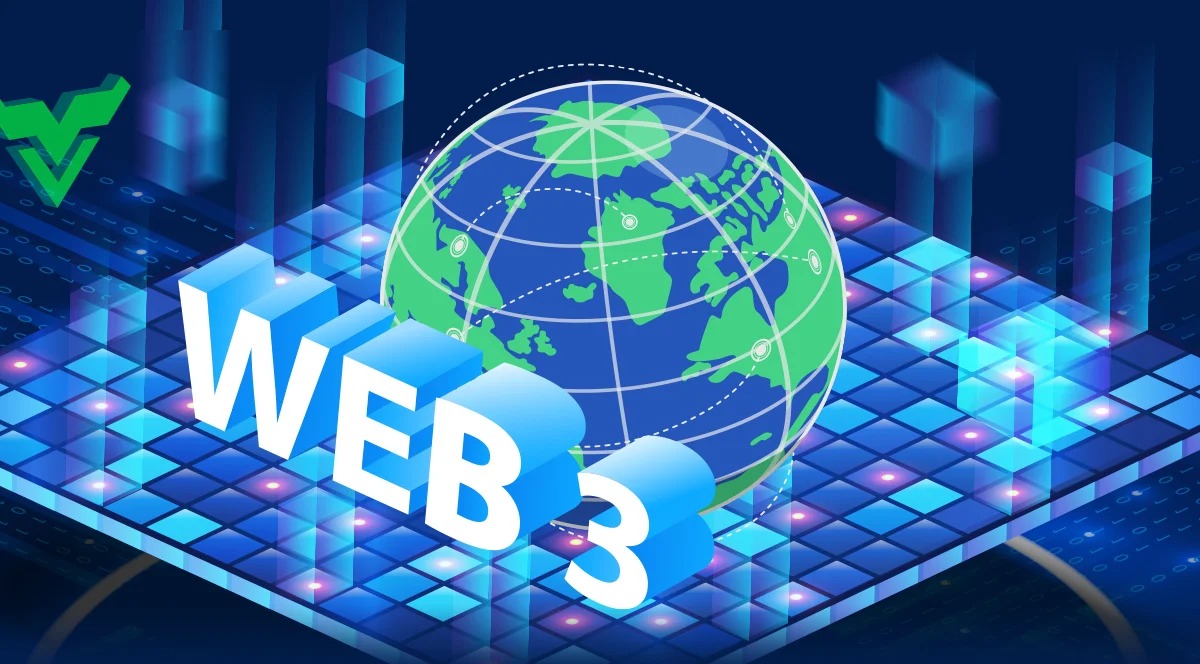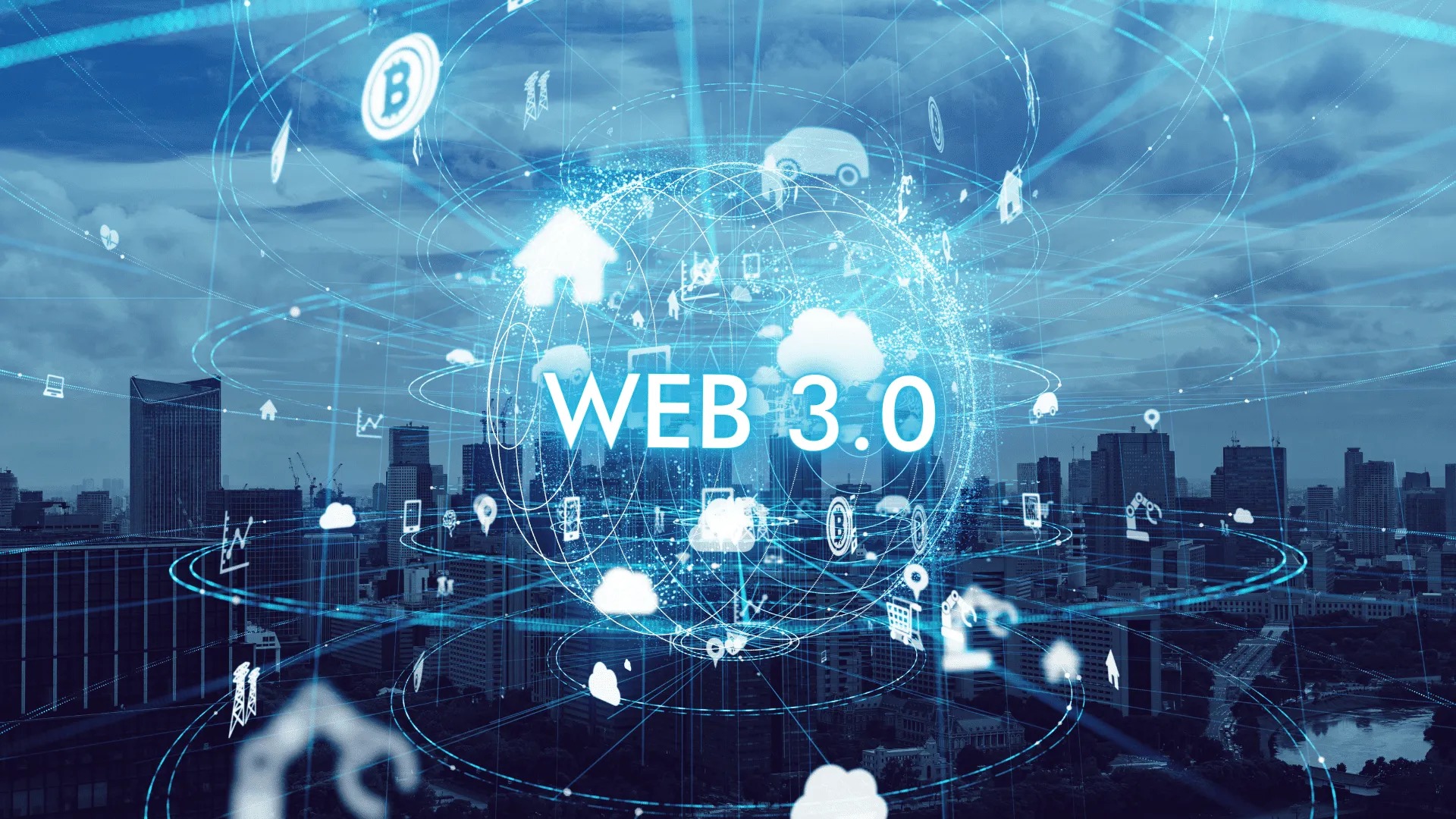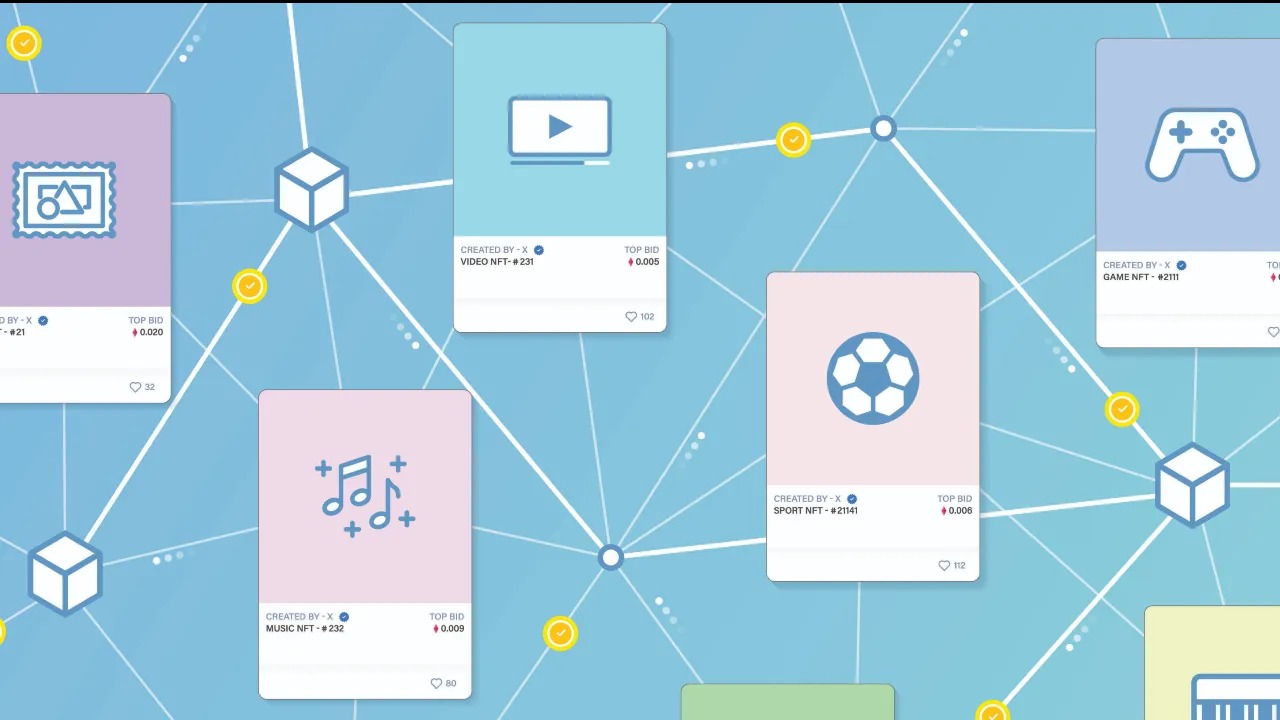With the continuous development of blockchain technology, Web 3.0 (Web3) is expected to be the future of the Internet and usher in a new era. However, many people are still skeptical about blockchain and Web 3.0
Since the concept of “Metaverse” was popular, Web 3.0 has also become the most sought-after phrase in recent times.
So, What are Blockchain and Web 3.0 in Crypto World?
Web 3.0 is the third generation of the Internet based on blockchain technology. Web 3.0 connects data together in a decentralized way to deliver faster, more personalized user experiences that even make the Internet as real as your life.
In particular, Web 3.0 is built using artificial intelligence (AI), machine learning, and semantic web (Semantic Web), and uses a blockchain security system to keep information safe and secure. security.
While Web 1.0 is a content delivery network and Web 2.0 builds a social media ecosystem, Web 3.0 is geared towards becoming a decentralized, distributed network.

Distinguishing Web1, Web2 and Web3: The “golden” features that make the difference for web3 to become an inevitable trend
Highlights of Blockchain and Web 3.0
- Semantic Web: The content of the web will be displayed based on effectively analyzing the meaning of words.
- Artificial Intelligence (AI): Web 3.0 leverages artificial intelligence to provide more accurate results faster through natural language processing where computers will understand information more like humans.
- 3D Graphics – Metaverse: A three-dimensional design that will be used in websites and services to provide a clear visual representation to users.
- No Intermediaries: In a decentralized network, transactions and data are exchanged directly, so your data and funds don’t have to depend on an intermediary like Google or payment platforms controlled like a bank.
- Prevent data breaches: The data will be under your control. It is very difficult for a hacker to have control over your data unless he can control the entire Blockchain network.
- Data will live forever: Your favorite games, text messages, or any other data on Web 3.0 will live as long as the Internet is active, no one has the right to access them and delete them.
- Security and trust: Through blockchain technology, Web 3.0 makes information transparent and reliable while ensuring privacy.
Notable Web 3.0 Projects
Theta
Theta is a video streaming platform.
Steve Chen, the co-founder of YouTube, says Theta will disrupt the online video industry as YouTube did in 2005. Also, Theta will solve the problem of delivering high-quality video to anywhere in the world. with low cost.
Helumi
Helumi (HNT) is one of the most popular Web 3.0 projects and is responsible for bringing the Internet to everyone. The project provides a web service designed to compete with ISP “giants” like Verizon and AT&T. It uses blockchain along with physical hotspots that allow users to access the internet wirelessly around the world.
River
River (FLUX) is like a sandbox for Web3 development. Users can develop Web 3.0 applications and decentralized projects, and then deploy them on the network. This is possible thanks to a decentralized operating system – FluxOS.
Polkadot
With a market capitalization of over $35 billion, Polkadot (DOT) is the ninth-largest cryptocurrency in the market. Not only that, but Polkadot is also the leading network in the Web 3.0 era thanks to its rigorous efforts to usher in a completely decentralized Internet through parachains.
Filecoin
Filecoin (FIL) is like a filing cabinet for Web3. It is a decentralized storage network that is both a secure alternative to centralized cloud storage and a passive way of making money.
Advantages and disadvantages of web 3.0

Advantages
- Eliminate middlemen
- Data cannot be modified or manipulated
- Seamless service, non-stop operation
- Transparency
- Open data accessibility
- Unlimited platform
- Advanced data processing
- Look at the surpassing characteristics
Looking at the outstanding features of Web 3.0, they will see that they are quite similar to the advantages that blockchain technology brings. It can be seen that the strong development of blockchain is an indispensable part of the formation of Web 3.0 today.
Disadvantages
- Slow processing speed: Having to run a large number of validator nodes slows down the speed of Web 3.0.
- New and complicated technology: In general, blockchain technology is still quite unfamiliar to many people, users need to learn new knowledge, download new software, and manipulate many complex steps. This is a barrier and it will take time to reach widespread adoption.
- Accessibility: Web 3.0 applications are mostly newly built rather than integrated with the popular and familiar Web 2.0 applications. This reduces the accessibility to users when they are too familiar with and loyal to the old platform.
- Junk data overflows: Data stored on the blockchain will not be erased, from there, there will be a lot of junk data that will make the data processing speed longer.
- High cost: The cost to develop a project is very expensive, dapps often have difficulty putting code on the blockchain because of Ethereum’s gas fee or the cost of auditing is also very high.
Although there are limitations, all are being gradually overcome. The fact that it is still at an early stage and with many problems to solve also means that many opportunities are opened for people who believe in the future of Web 3.0 and develop related products.
What problems do blockchain and Web 3.0 solve?
Privacy issues
Tech companies collect terabytes of user data, raising concerns about data security and personal privacy. In November 2021, a Washington Post poll found that 72% of users do not trust Facebook.
For Web 3.0 it is different, the information and data will be owned by the creator. Therefore, the theft of information can be limited.
Freedom of speech
In January 2021, Twitter locked Donald Trump’s account for inciting violence. This led to a worldwide discussion about freedom of speech.
At the heart of these discussions was the question “Does a social media company have the right to moderate posts?”. However, if we enter the age of Web 3.0, will the world have a free speech online environment? In fact, this is possible, because control is distributed to every connected user.
Overcoming the limitations of Web 2.0
Web 3.0 not only inherits the good features of Web 2.0, but it also helps to handle the current limitations of Web 2.0, including:
- Verifiable: Verifiable and capable of on-chain validation.
- Trustless & permissionless: Minimize the points related to trust and anyone is likely to attend.
- Self-governing: Taking customers as the center, customers have full rights to their own information and possessions.
- Distributed: Authority is distributed to the customer.
Web 3.0 Application

With blockchain at its core, Web 3.0 makes it possible to expand the range of new applications and services, such as:
- NFT: Non-fungible tokens (NFT) are tokens that are unique and stored in a blockchain with a cryptographic hash.
- DeFi: Decentralized Finance is a new application of Web 3.0 where decentralized blockchain is used as the basis for allowing financial services to escape the constraints of banking infrastructure. traditional focus.
- Cryptocurrencies: Cryptocurrencies (like Bitcoin) are created through Web 3.0 applications, which creates a new world of money that aims to be separate from the traditional world of cash.
- dApp: Decentralized applications are applications that are built on top of the blockchain and use smart contracts to allow programmatic service delivery to be logged into an immutable ledger. .
- Cross-chain Bridges: There are many blockchains in the Web 3.0 world, and cross-chain bridges provide some kind of connection between them.
- DAOs: DAOs are set up to potentially become organizational entities for Web 3.0 services, providing some structure and governance in a decentralized approach.
The Potential of Blockchain and Web 3.0
It can be said that Web 3.0 opens up many new business models, and at the same time appears many more industries that have never existed before.
One of the most successful models today is DeFi, a decentralized financial network, with the application of blockchain technology to eliminate middlemen in transactions that have made the success of the crypto market today. now. In just one year from November 2020 to November 2021, the capitalization of the crypto market grew from $450 billion to over $3 trillion, a tremendous growth rate.
The crypto market is only the first exploited application from Web 3.0, which means that in the future there will be many breakthroughs, many practical applications thanks to Web 3.0 as well as blockchain technology.






